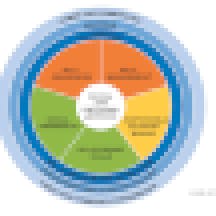Social-emotional learning (SEL) has become a top implementation priority for districts, ed-tech companies and education researchers, and for good reason: Kids need it.
With the rise in youth suicide rates, increased numbers of violent incidents in schools and the growing rate of American youth diagnosed with mental health issues such as anxiety and depression, the social emotional instability of America’s youth has, according to some experts, become a national crisis. Many are turning to SEL as a means to address this growing concern and spark conversation around sensitive or vulnerable topics.
Today, all 50 states have free-standing standards for SEL, according to a report from the National Conference of State Legislatures. (However, only 8 states currently have standards that address PreK through grade 12.) Many districts and schools throughout the nation have begun to adopt and implement well-researched curricular programs such as Second Step in order to begin to address SEL topics with their students.

But what if you work in a district or school that has yet to place SEL on the priority list? Perhaps you are thinking, “I know SEL is important, but I don’t have time to teach another subject on top of what I already do.” Implementing SEL in your own classroom does not need to feel so daunting. There’s things you can start doing right now.
According to The National Commission on Social, Emotional and Academic Development’s January 2019 report, “A Nation at Hope,” educators should “explicitly teach social, emotional and cognitive skills” and “intentionally teach specific skills and competencies and infuse them in academic content.”
Here are four easy steps to begin the process of addressing SEL within your own teaching practice. In fact, implementing these steps now can be extremely helpful as you near the end of the school year and set learning priorities for your next class of students.
Review the CASEL Framework
Taking time to familiarize yourself with state SEL standards is necessary, but time consuming. Instead, use the Collaborative for Academic, Social, and Emotional Learning (CASEL)’s framework for SEL as a starting point.
CASEL is the leading organization in the development and support of social emotional learning research, practices, and policies. The SEL framework includes five core competencies: self-awareness, self-management, social awareness, relationship skills and responsible decision-making. While reviewing the framework, you may wish to reflect on questions such as:
- What are my own strengths and areas for growth?
- How might I model this competency to my students? or
- How might a student demonstrate this SEL skill?
Becoming familiar with these core competencies will provide you with a frame of reference as you begin to reflect on strengths and opportunities for growth for both you and your students.

Take an Inventory
After reviewing CASEL’s framework, take time to reflect on your own interactions and those of your students. Self reflection is just as important as observing your students. Take notice and observe how you interact with your students during all parts of your school day. Where do these interactions fit within the five CASEL competencies? Are there moments within your current lessons that allow students to practice certain SEL skills? What student behaviors (both positive and developing) do you observe?
Thinking about all of the competencies at once will be too overwhelming. Instead, select one area to focus on. Then spend a few days (or even a school week) honing the applicable behaviors and interactions that you observe. Documenting your reflections and observations will allow you to identify patterns and gaps in student learning and in your own practice.
Start Conversations
Take your work a step further by explicitly identifying these interactions in a meaningful way. For example, create a visual space where examples of behaviors can be briefly written down. The visual can then be used to start conversations about real interactions. These observable moments may occur outside your formal classroom. Playgrounds, hallways, cafeterias and other social hotspots are great places to observe behaviors in real-time. Starting these conversations will depend on the age of your students and the type of behaviors observed.
Regardless of the means by which you explicitly identify these interactions, the discussions that follow—based on authentic interactions—will allow SEL behaviors to become observable and real to your students.
Broaden the Scope
Conversations about authentic experiences will likely cause a shift in both your thinking and that of your students. However, social emotional learning extends well beyond your classroom. A supportive and engaged school culture and climate are key components in creating environments conducive to social emotional growth. Expand these conversations to include all stakeholders. Classroom teachers, specialists, coaches, administrators and parents should be encouraged to participate in the conversation.
For example, reflecting on authentic data points with other teachers can help inform teaching for your peers. Discussing these findings with parents may help you understand students in a more meaningful way. And sharing this information with administrators can help to recognize patterns of behavior (of both teachers and students) at a school and district level. These conversations can be extremely helpful in making informed decisions when adopting SEL programming on a larger scale.
Like any worthwhile education initiative, implementing social emotional learning into your classroom, school and district takes time, effort and commitment. However, social emotional learning is different; when implemented in a thoughtful and meaningful way, SEL can play a vital role in moving our nation’s youth towards a more healthy, stable emotional path. The steps above can assist you in beginning this vital work.


